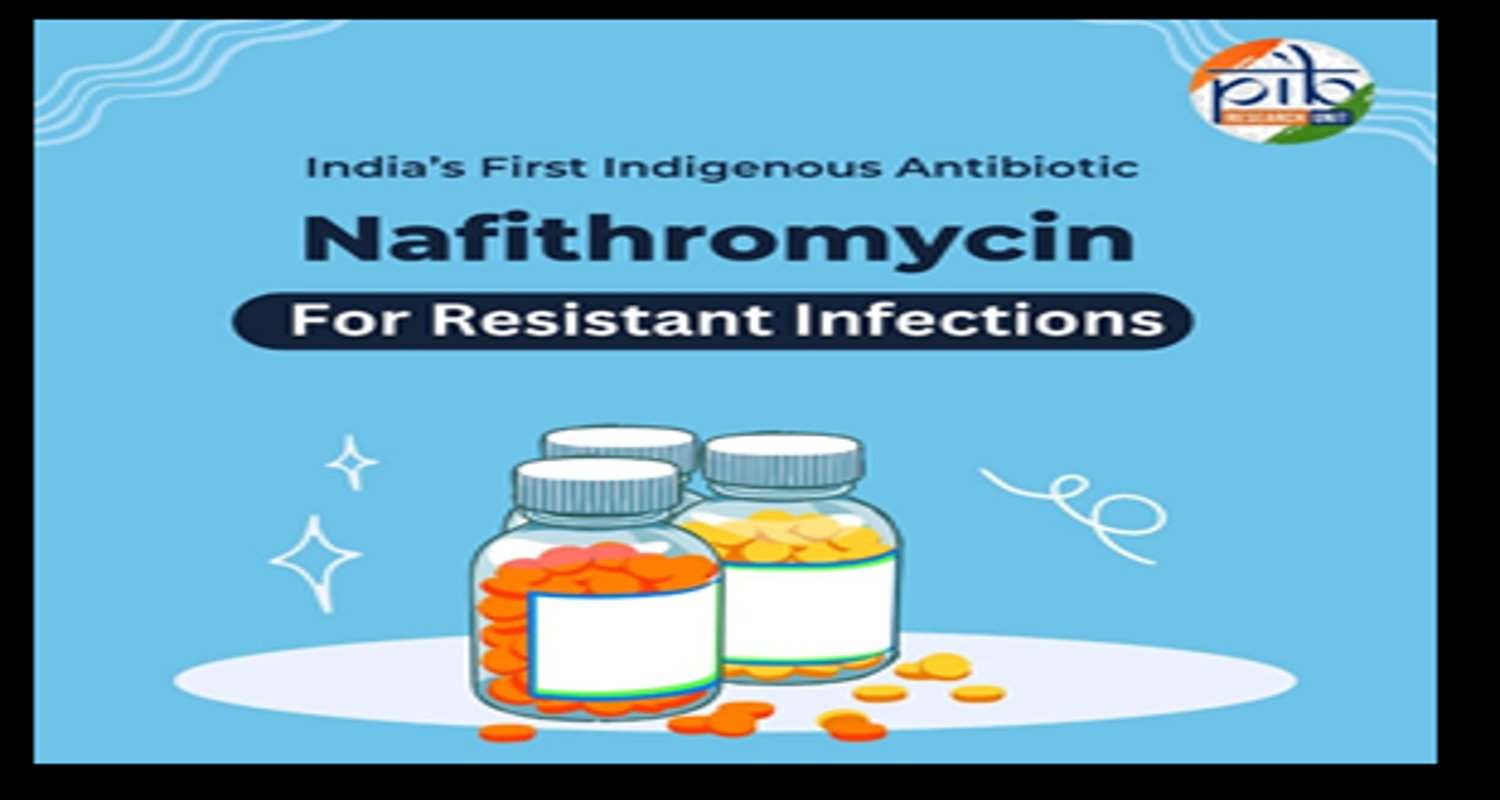Nafithromycin: India’s First Indigenous Antibiotic
by GovernBetter Desk | 5 min read
PublicHealth
Nafithromycin
Nafithromycin is the first new antibiotic in its class introduced globally in over 30 years, representing a major leap in combating AMR.

The introduction of Nafithromycin, India’s first indigenous macrolide antibiotic, is a groundbreaking achievement that underscores the nation’s growing capabilities in pharmaceutical innovation. Officially launched on November 20, 2024, this revolutionary drug addresses antimicrobial resistance (AMR),a critical global health issue by offering hope for millions affected by drug-resistant infections.Union Minister Dr. Jitendra Singh hailed Nafithromycin as a testament to India’s ability to develop homegrown solutions to pressing healthcare challenges.
India's Fight Against Antimicrobial Resistance (AMR)
Antimicrobial resistance occurs when bacteria, viruses, fungi, and parasites no longer respond to medicines, rendering treatments ineffective and infections harder to control. AMR is fueled by the misuse and overuse of antimicrobials in humans, animals, and agriculture.
In India, AMR claims around 6 lakh lives annually, making it a significant public health issue. Nafithromycin marks a critical step in combating this crisis.
Key Milestones in Nafithromycin’s Development:
-
Developed by Wockhardt with support from the Biotechnology Industry Research Assistance Council (BIRAC).
-
Funded with ₹8 crore under BIRAC’s Biotech Industry Program for Phase 3 clinical trials.
-
Targets Community-Acquired Bacterial Pneumonia (CABP) caused by drug-resistant bacteria, particularly affecting children, the elderly, and those with weakened immune systems.
-
Developed with an investment of ₹500 crore, the drug is awaiting final approval from the Central Drugs Standard Control Organization (CDSCO).
Why Nafithromycin is a Milestone in Public Health
Key Features:
-
High Efficacy: Ten times more effective than current treatments like azithromycin.
-
Shorter Treatment Duration: A three-day treatment regimen improves patient compliance and recovery times.
-
Dual-Action: Treats both typical and atypical drug-resistant bacteria.
-
Safety and Tolerance: Minimal side effects and no significant drug interactions.
Nafithromycin is the first new antibiotic in its class introduced globally in over 30 years, representing a major leap in combating AMR. Clinical trials conducted across the U.S., Europe, and India validate its efficacy and safety.
India, which bears a significant global pneumonia burden, stands to benefit immensely from Nafithromycin’s introduction. Its ability to combat drug-resistant infections has the potential to save countless lives, improve health outcomes, and reduce AMR-related fatalities.
Government Initiatives to Combat AMR
In addition to Nafithromycin’s development, the Government of India has implemented a range of measures to address AMR, focusing on surveillance, awareness, regulation, and collaboration:
1. Surveillance and Reporting:
-
National Surveillance Networks: Generate annual AMR reports and contribute data to the Global AMR Surveillance System (GLASS).
2. Awareness and Training:
-
Campaigns promoting the judicious use of antimicrobials, hand hygiene, and infection prevention.
-
National guidelines on infection prevention and “train-the-trainer” programs implemented across states.
3. Judicious Use of Antimicrobials:
-
Monitoring antimicrobial usage in tertiary care hospitals.
-
Regulation under Schedule H and H1 to ensure antibiotics are only available with a prescription.
4. Red Line Campaign:
-
Launched by the Ministry of Health and Family Welfare, the campaign educates the public about avoiding antibiotics marked with a red line unless prescribed by a doctor.
5. National Action Plan on AMR (NAP-AMR):
-
Launched in 2017 and aligned with the Global Action Plan on AMR, focusing on multi-sectoral implementation.
-
NAP-AMR 2.0 is under development to strengthen AMR research and policies across human health, animal husbandry, environment, and research sectors.
6. Regulation of High-End Antibiotics:
-
Inclusion of 24 high-end antimicrobials under Schedule H1 to prevent misuse.
Global Cooperation on AMR
India collaborates with global organizations to tackle AMR through surveillance, capacity building, and policy development:
-
India-US CDC Partnership: Focuses on AMR surveillance and capacity building.
-
USAID Collaboration: Strengthens AMR containment efforts in six states.
-
Fleming Fund (UK): Supports AMR surveillance networks and training programs.
-
India-Denmark Collaboration: Recent technical partnership to address AMR.
-
Indo-Netherlands Collaboration: Integrates AMR surveillance with a One Health approach.
These collaborations exemplify India’s commitment to combating AMR at both national and global levels.
Nafithromycin’s launch marks a historic milestone for India’s healthcare sector, showcasing the power of innovation and public-private collaboration. As the first indigenous macrolide antibiotic, it represents a critical tool in addressing AMR, improving health outcomes, and saving lives.The Government of India’s strategic initiatives, combined with global partnerships, highlight a comprehensive approach to combating AMR through surveillance, awareness, regulation, and innovation. With continued investments in research and capacity building, India is well-positioned to lead the global fight against AMR, paving the way for a healthier future.
Contact Us. We'd love to hear from you!

GovernBetter
An unconventional governance innovation lab, working at the intersection of policies, data and impact collaborating with governments, civil society, academia and international organization to strengthen democratic institutions, improve service delivery, and make public policy more transparent, inclusive, and effective with specific focus on emerging technologies.
Quick Links
Copyright © GovernBetter 2025